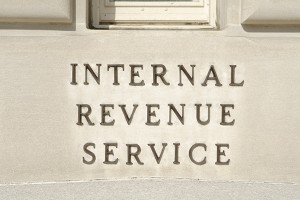
I just read the January 17, Kiplinger Tax Letter which stated the 2013 individual audit rate was one out of every 104 1040 tax returns and they expect this amount to decrease as the IRS examination resources continue to shrink due to budget cuts. Millionaires seemed to get the most scrutiny, 1 out of every 9, and those with taxable incomes between $200,000 to $1,000,000 had an audit rate of 1 out of 37 and those with taxable incomes under $200,000 were audited 1 out of every 113.
I tried to create a list of obvious red flags that can increase your chances of being audited and possible solutions.
1. Claiming 100% business use of your car especially if there is no other car available for personal use which is an actual question on the return.
2. Deducting disproportionate or large amounts of business travel, meals and entertainment on schedule C of form 1040. I typically form an LLC for my sole proprietor clients and have them file 1120S corporate returns to reduce their chances of being audited.
3. Writing off a large hobby loss from horse or car racing or dog breeding on your schedule C which offsets your other income and decreases your taxes.
4. Deducting rental losses on schedule E of form 1040 by claiming to be a real estate professional where you must show you spend more than 50% of your working time and over 750 hours materially participating in real estate activities. However if you have more than one rental property you should make an election to have all your rental properties treated as one activity.
5. Running a cash business. The IRS is keenly aware of cash businesses such as taxis, restaurants, bars, lawn care, hair salons or car washes. The IRS even has guides for Revenue Agents to use when auditing cash-intensive businesses, telling how to interview owners and noting various indicators of unreported income, which is why you should always hire a tax professional like Gregory J. Spadea to represent you if you are audited.
6. Failing to report foreign bank accounts. This is a huge area of focus with significant penalties possible especially since the IRS has had success getting foreign banks to disclose account owner information.
7. Taking higher than average deductions. The IRS may pull a return for review if the deductions are disproportionately high when compared with the reported income. This is why I always consider the category averages of filed returns with similar income when preparing returns for my clients.
8. Unsupported cash or property charitable contributions deducted on Schedule A of form 1040. I always recommend my clients get a letter from their church or charity if they give more than $250.00 during the tax year.
9. Improper matching of income reported by 1099-B, 1099-C, 1099-INT, 1099-DIV, 1099-K, W-2 or K-1 which is how most correspondence audits are triggered. I normally file an amended return to report the income and deduct the appropriate expenses.
10. Math mistakes on the return, although these can be avoided if you electronically file your return.
11. Claiming a dependency exemption also claimed by another taxpayer such as an ex-spouse, or the dependent themselves. If you do not have physical custody you should ensure the custodial parent signs Form 8332 to release the exemption to you.
12. Not filing your returns which may result in the IRS filing a Substitute for Return based on third party information and not allowing any deductions. I normally file the delinquent returns to take the appropriate deductions and apply for an installment agreement if necessary.
13. Engaging in cash transactions. The IRS gets many reports of cash transactions in excess of $10,000 on form 8300 from banks, casinos, car dealers and other businesses, plus suspicious-activity reports from banks and disclosures of foreign accounts. Understand that the IRS looks at “step transactions” that occur with a short period to build upon transactions that are less than the $10,000 threshold.
14. Telling everyone how you put one over on the IRS. The IRS will look at your Facebook page and your other social media sites or pay whistle-blowers such as your ex-spouse, a disgruntled employee or a competitor, rewards of 15% to 30% of the additional tax collected, including fines, penalties and interest after they audit you.
15. Filing late after the extension period has expired, which also means late filing penalties.
16. Employee Job Expenses. The IRS generally starts with the assumption that if an employer doesn’t reimburse a specific expense made by the employee, that expense may not be a true job expense. So, if you are a W-2 employee, you must meet the following three guidelines: 1) total of all expenses exceeds two percent of your adjusted gross income; 2) the expenses are deemed “ordinary and necessary”; and 3) the expenses were not reimbursed.
17. Too many round numbers on a return, because the IRS thinks you just estimated or made up the amounts deducted.
18. Alimony deductions that don’t agree to alimony income of the recipient. In these cases the IRS requests the divorce decree or settlement agreement that specifies the amount of alimony.
The endless social engineering by Congress with tax deductions, credits, capital gains taxes and income tax rates makes it essential to have your tax return reviewed by your tax professional to determine whether such deductions are permitted and what tax strategies should be employed. Please call Gregory J. Spadea at 610-521-0604 of Spadea & Associates, LLC in Ridley Park, Pennsylvania if you get an audit letter or want help preparing your tax returns.
















